Probably everyone who has ever met or escorted relatives or friends on a plane, used the free service Flightradar24. This is a very convenient way to track the position of the aircraft in real time.
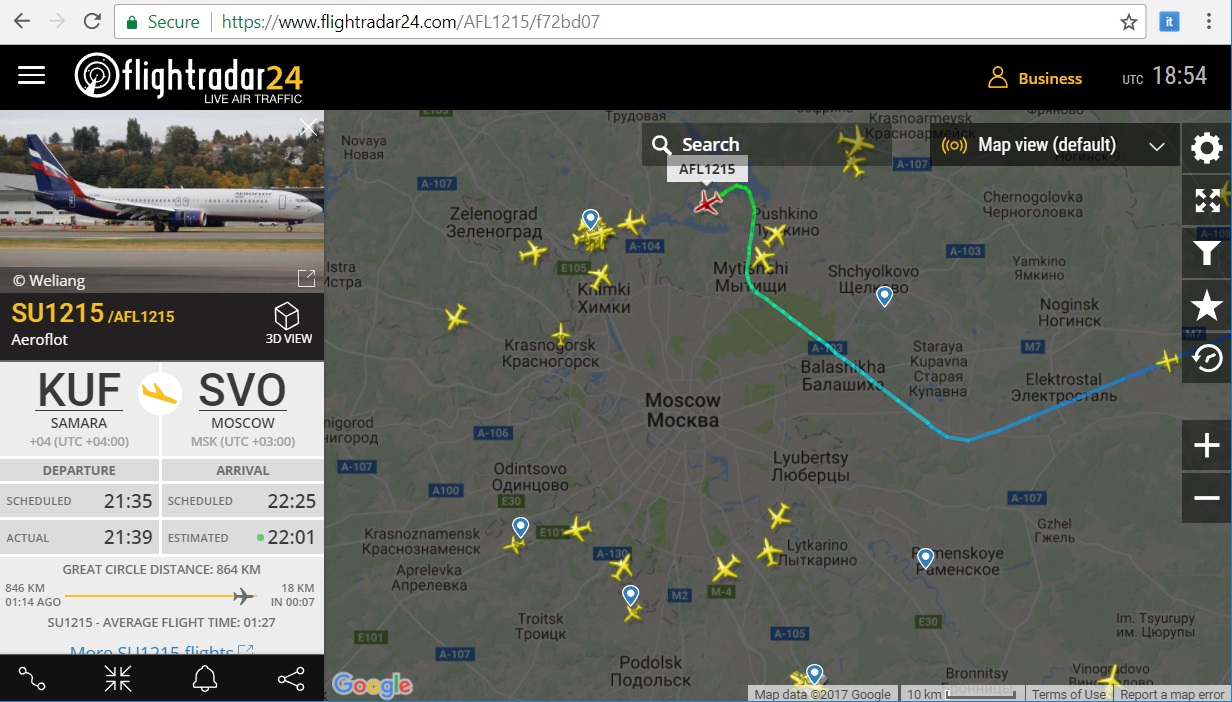
A survey of friends showed that very few people know that this service is supported only by enthusiasts who send data to the server. Even less know that anyone can join the project.
We fill this gap. How it works we will continue under a cat.
Iron
The very first question is where the data comes from.
Each civilian aircraft is equipped with a special transmitter, the so-called
ADS-B transponder :
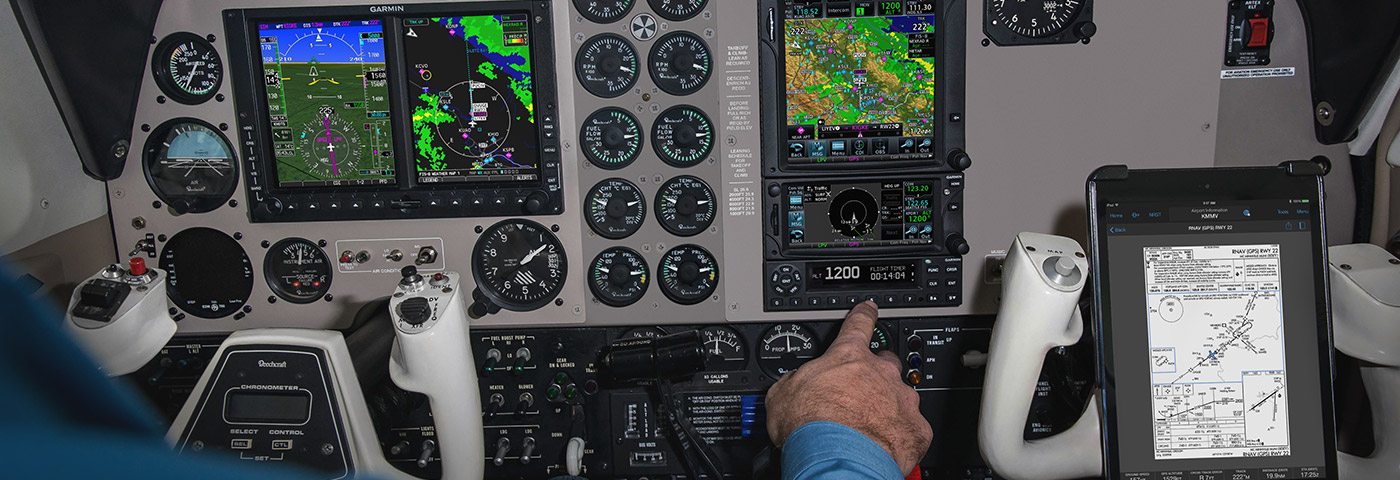 (photo from Garmin)
(photo from Garmin)This device sends special packages on the frequency 1090 MHz containing the main flight parameters, type of aircraft, its coordinates, destination, etc.
The signal on the spectrum looks like this:
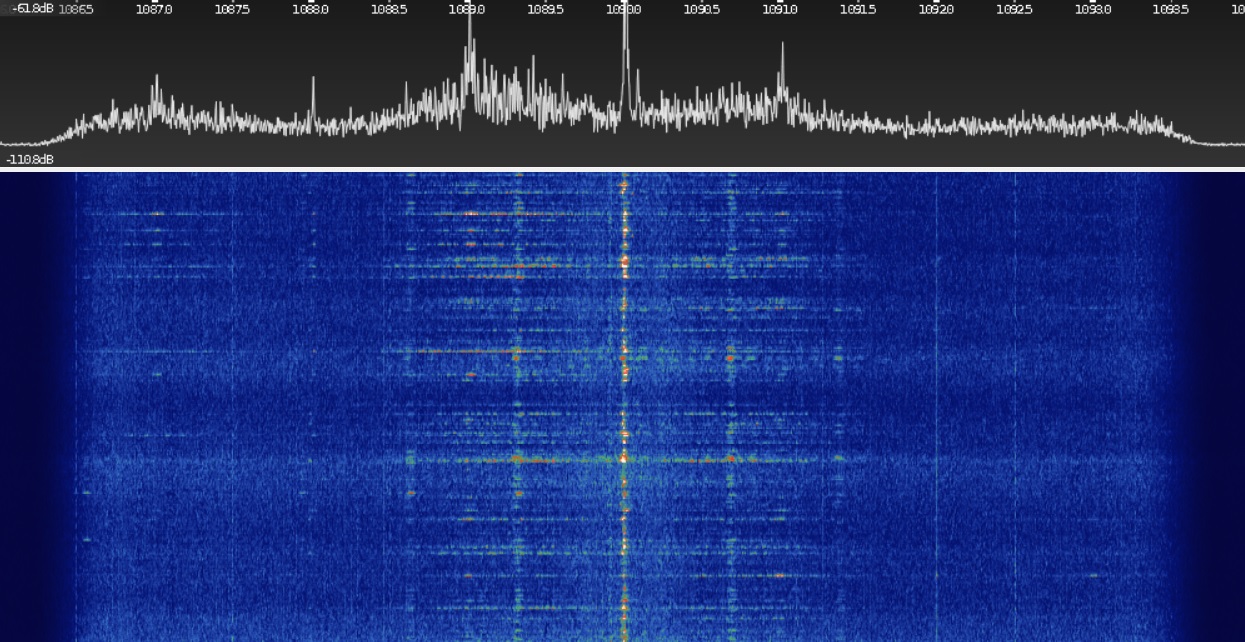
And what is most important for us is that it is easy to decode this data; an RTL-SDR receiver, priced at about $ 8, connected to a computer is sufficient. Actually, the idea is probably already clear - if we collect data from a variety of receivers, we get a picture, like this:
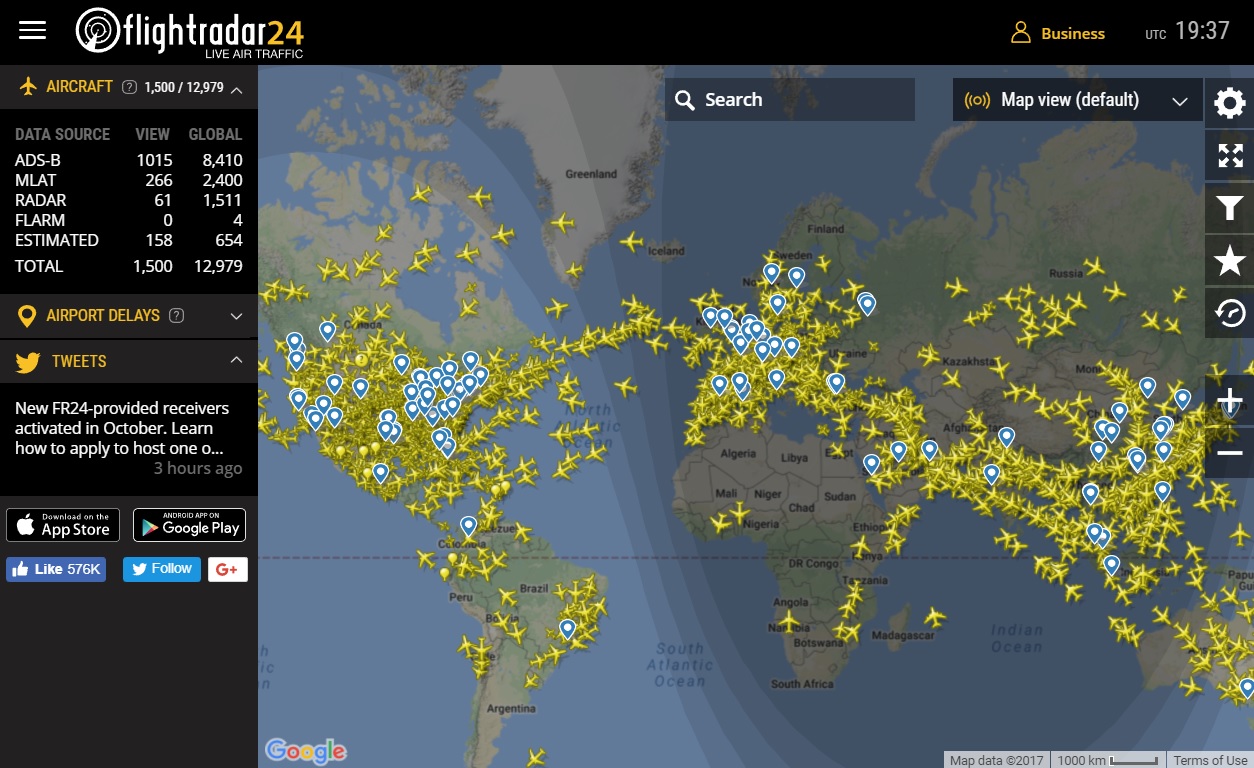
But that's not all. Some airplanes transmit data packets, but they lack GPS coordinates. If you receive data simultaneously from multiple receivers whose coordinates are known, then by analyzing the delays at different receivers, you can find out the location of the aircraft. This technology is called multilateration (MLAT), more information about it can be found
on the site .
And finally, the last question is how the data is received. The answer is simple, anyone can host the receiver, the price of the question ranges from $ 0 to $ 50. For example, the Flightaware service receiver map looks like this:

As you can see, the coverage of the Russian part leaves much to be desired, so some quite have a chance to be first.
To receive data you need:
- Raspberry Pi2 / 3 with internet connection (price from $ 20)
- RTL-SDR-dongle (price from $ 10)
- at least the simplest antenna of their 2x pieces of wire with a length of 6.8 cm each (1/4 dipole at 1090 MHz)
A place with a more or less open view of at least part of the sky is also desirable, since GHz signals are absorbed by obstacles such as houses or trees.
I already had Raspberry Pi and RTL-SDR, so I didn't have to buy anything. But anyone can try to get a ready-made receiver for free - and Flightradar and Flightaware send kits for free to users in areas where coverage is currently not enough. You can send a request via the link (
Flightradar or
Flightaware ), of course, it is advisable to try those who live in fairly remote areas.
I used a set of RTL-SDR V3, which, together with the antenna and mini tripod, cost $ 27 with free shipping from China:
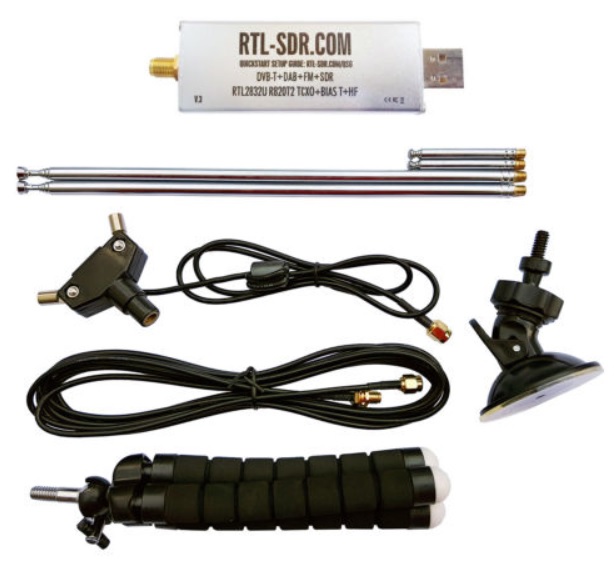
By the way, as a second bonus, everyone sending data to the server, and Flightradar24 and Flightaware provide
unlimited access to the premium account and all server functions (separately such access costs about $ 50 / month). So if someone is interested in aviation and wants to have expanded access to such an account, installing an RTLSDR receiver is a cheap alternative.
Testing
Installation is extremely simple, on the Raspberry Pi, just plug in the receiver and run one command:
sudo bash -c "$(wget -O - http://repo.feed.flightradar24.com/install_fr24_rpi.sh)"
( , ), , . - ( FR24
https://www.flightradar24.com/premium/signup?account=free) ( ).
IP- Raspberry Pi :
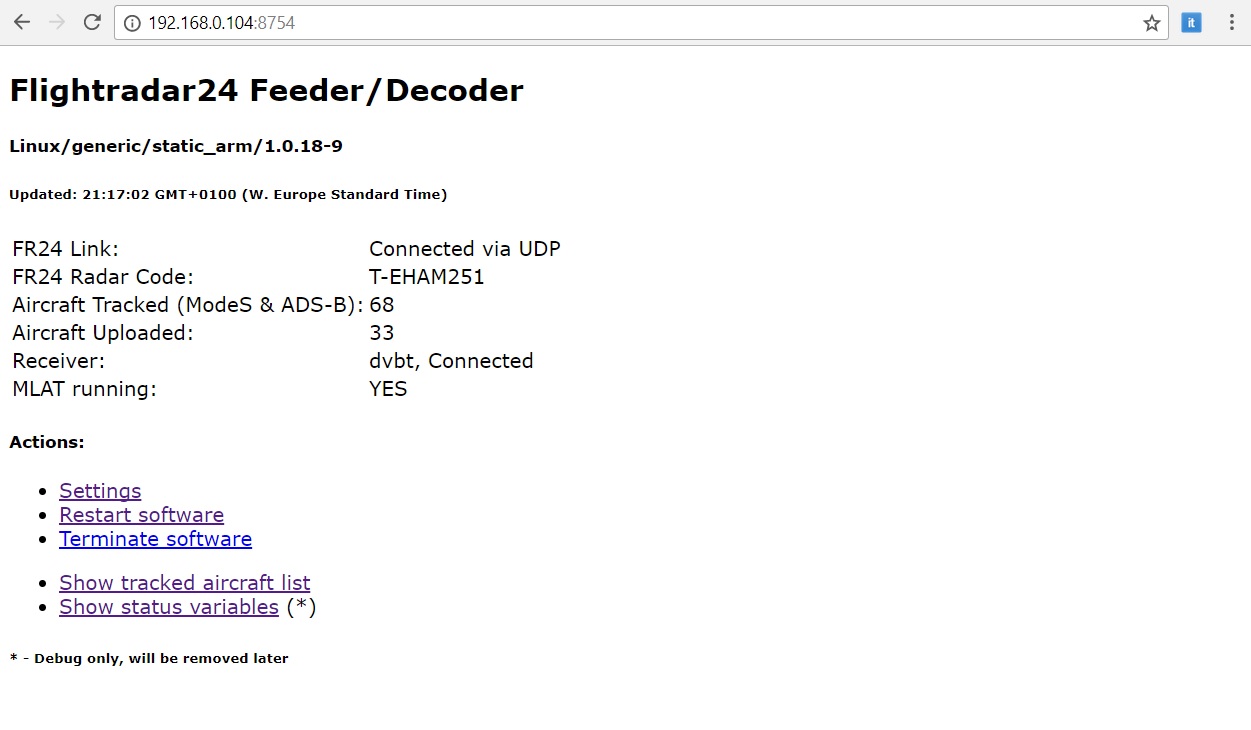
Flightradar24:
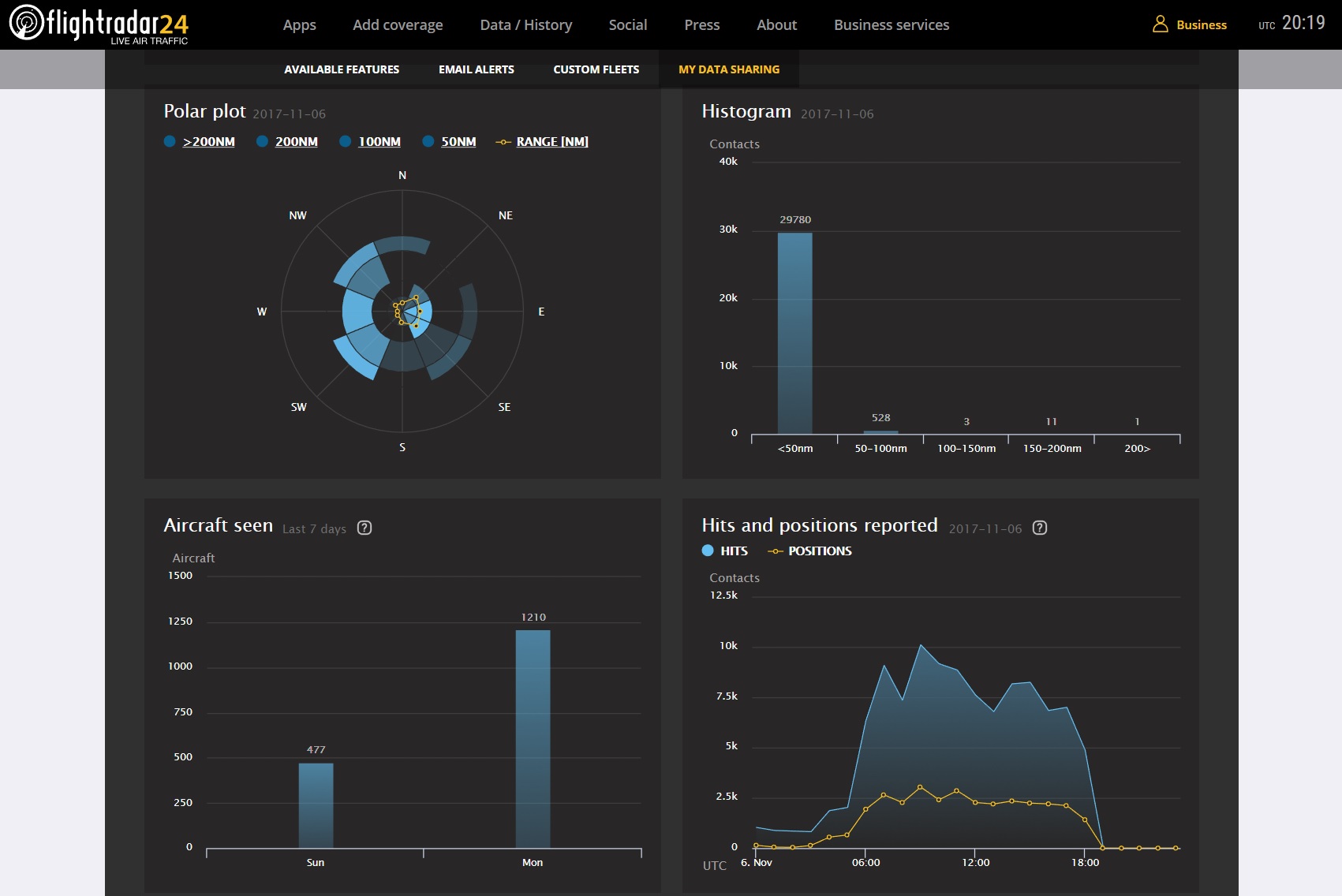
6- , 1000, . , 215 . ebay, ads-b antenna.
, . : Flightradar? , Raspberry Pi .
github.com/antirez/dump1090.
Raspberry Pi 3 :
git clone https://github.com/antirez/dump1090.git
cd dump1090/
make
:
./dump1090 --interactive --net
, « » — «»:
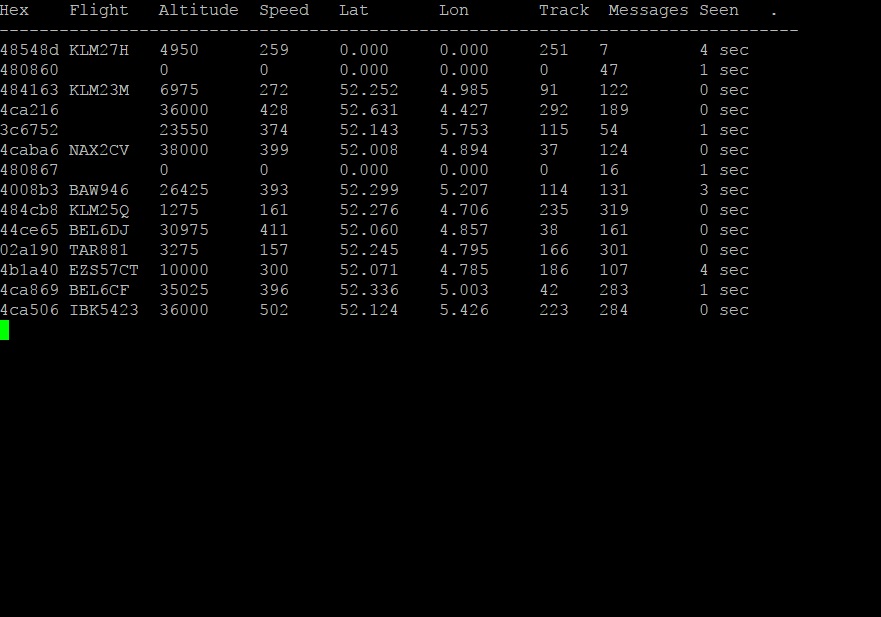
Raspberry Pi , Flightradar, :
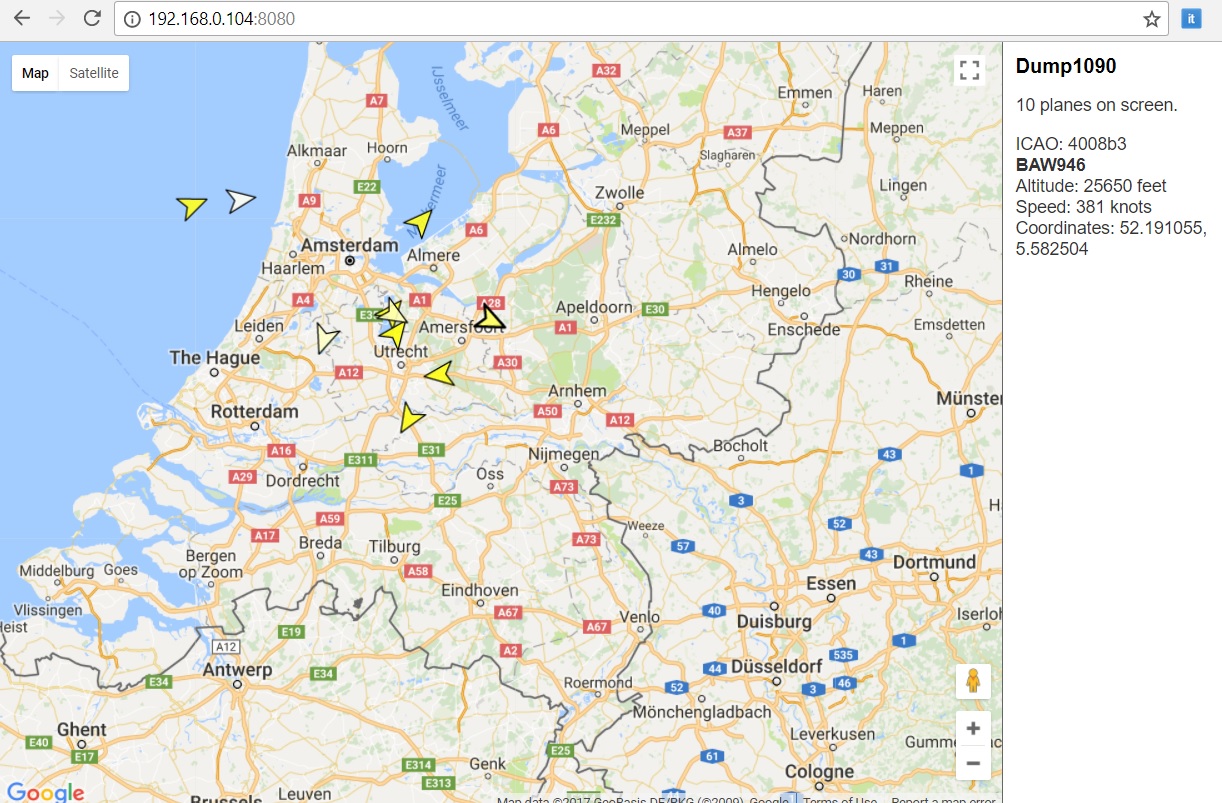
? -, , -, Flightradar24, ,
(, , , -). , « », . , , , MLAT. Dump1090 , Flightradar, c bells and whistles.
, , . : 10 Airnav RadarBox 1000$, RTL-SDR, , 10$.
, , 100%. , , — , , Premium- .
.